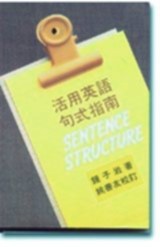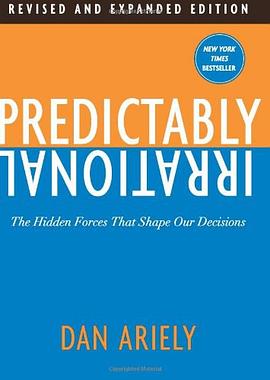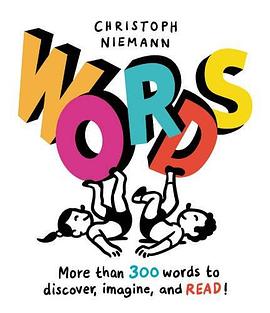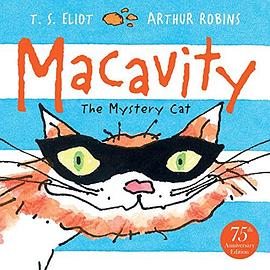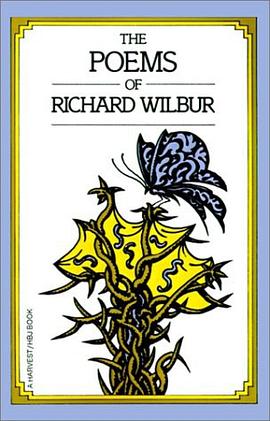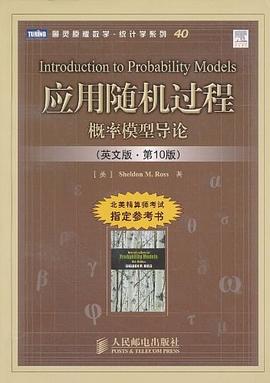

具體描述
《應用隨機過程:概率模型導論(英文版·第10版)》敘述深入淺齣,涉及麵廣。主要內容有隨機變量、條件概率及條件期望、離散及連續馬爾可夫鏈、指數分布、泊鬆過程、布朗運動及平穩過程、更新理論及排隊論等;也包括瞭隨機過程在物理、生物、運籌、網絡、遺傳、經濟、保險、金融及可靠性中的應用。特彆是有關隨機模擬的內容,給隨機係統運行的模擬計算提供瞭有力的工具。除正文外,《應用隨機過程——概率模型導論(第10版:英文版)》有約700道習題,其中帶星號的習題還提供瞭解答。
《應用隨機過程:概率模型導論(英文版·第10版)》可作為概率論與統計、計算機科學、保險學、物理學、社會科學、生命科學、管理科學與工程學等專業的隨機過程基礎課教材。
著者簡介
Sheldon M.Ross,國際知名概率與統計學傢,南加州大學工業工程與運籌係係主任。1968年博士畢業於斯坦福大學統計係,曾在加州大學伯剋利分校任教多年。研究領域包括:隨機模型、仿真模擬、統計分析、金融數學等。Ross教授著述頗豐,他的多種暢銷數學和統計教材均産生瞭世界性的影響,如A First Course in Probability(《概率論基礎教程》)和Simulation(《統計模擬》)等(均由人民郵電齣版社引進齣版)。
圖書目錄
1.1 introduction
1.2 sample space and events
1.3 probabilities defined on events
1.4 conditional probabilities
1.5 independent events
1.6 bayes' formula
exercises
references
2 random variables
2.1 random variables
2.2 discrete random variables
2.2.1 the bernoulli random variable
2.2.2 the binomial random variable
2.2.3 the geometric random variable
2.2.4 the poisson random variable
2.3 continuous random variables
2.3.1 the uniform random variable
2.3.2 exponential random variables
2.3.3 gamma random variables
2.3.4 normal random variables
2.4 expectation of a random variable
2.4.1 the discrete case
2.4.2 the continuous case
2.4.3 expectation of a function of a random variable
2.5 jointly distributed random variables
2.5.1 joint distribution functions
2.5.2 independent random variables
2.5.3 covariance and variance of sums of random variables
2.5.4 joint probability distribution of functions of randomvariables
2.6 moment generating functions
2.6.1 the joint distribution of the sample mean and sample variance from a normal population
2.7 the distribution of the number of events that occur
2.8 limit theorems
2.9 stochastic processes
exercises
references
3 conditional probability and conditional expectation
3.1 introduction
3.2 the discrete case
3.3 the continuous case
3.4 computing expectations by conditioning
3.4.1 computing variances by conditioning
3.5 computing probabilities by conditioning
3.6 some applications
3.6.1 a list model
3.6.2 a random graph
3.6.3 uniform priors, polya's urn model, and bose-einstein statistics
3.6.4 mean time for patterns
3.6.5 the k-record values of discrete random variables
3.6.6 left skip free random walks
3.7 an identity for compound random variables
3.7.1 poisson compounding distribution
3.7.2 binomial compounding distribution
3.7.3 a compounding distribution related to the negative binomial
exercises
4 markov chains
4.1 introduction
4.2 chapman-kolmogorov equations
4.3 classification of states
4.4 limiting probabilities
4.5 some applications
4.5.1 the gambler's ruin problem
4.5.2 a model for algorithmic efficiency
4.5.3 using a random walk to analyze a probabilistic algorithm for the satisfiability problem
4.6 mean time spent in transient states
4.7 branching processes
4.8 time reversible markov chains
4.9 markov chain monte carlo methods
4.10 markov decision processes
4.11 hidden markov chains
4.11.1 predicting the states
exercises
references
5 the exponential distribution and the poisson process
5.1 introduction
5.2 the exponential distribution
5.2.1 definition
5.2.2 properties of the exponential distribution
5.2.3 further properties of the exponential distribution
5.2.4 convolutions of exponential random variables
5.3 the poisson process
5.3.1 counting processes
5.3.2 definition of the poisson process
5.3.3 interarrival and waiting time distributions
5.3.4 further properties of poisson processes
5.3.5 conditional distribution of the arrival times
5.3.6 estimating software reliability
5.4 generalizations of the poisson process
5.4.1 nonhomogeneous poisson process
5.4.2 compound poisson process
5.4.3 conditional or mixed poisson processes
exercises
references
6 continuous-time markov chains
6.1 introduction
6.2 continuous-time markov chains
6.3 birth and death processes
6.4 the transition probability function pij (t)
6.5 limiting probabilities
6.6 time reversibility
6.7 uniformization
6.8 computing the transition probabilities
exercises
references
7 renewal theory and its applications
7.1 introduction
7.2 distribution of n(t)
7.3 limit theorems and their applications
7.4 renewal reward processes
7.5 regenerative processes
7.5.1 alternating renewal processes
7.6 semi-markov processes
7.7 the inspection paradox
7.8 computing the renewal function
7.9 applications to patterns
7.9.1 patterns of discrete random variables
7.9.2 the expected time to a maximal run of distinct values
7.9.3 increasing runs of continuous random variables
7.10 the insurance ruin problem
exercises
references
8 queueing theory
8.1 introduction
8.2 preliminaries
8.2.1 cost equations
8.2.2 steady-state probabilities
8.3 exponential models
8.3.1 a single-server exponential queueing system
8.3.2 a single-server exponential queueing system having finite capacity
8.3.3 birth and death queueing models
8.3.4 a shoe shine shop
8.3.5 a queueing system with bulk service
8.4 network of queues
8.4.1 open systems
8.4.2 closed systems
8.5 the system m/g/1
8.5.1 preliminaries: work and another cost identity
8.5.2 application of work to m/g/1
8.5.3 busy periods
8.6 variations on the m/g/1
8.6.1 the m/g/1 with random-sized batch arrivals
8.6.2 priority queues
8.6.3 an m/g/1 optimization example
8.6.4 the m/g/1 queue with server breakdown
8.7 the model g/m/1
8.7.1 the g/m/1 busy and idle periods
8.8 a finite source model
8.9 multiserver queues
8.9.1 erlang's loss system
8.9.2 the m/m/k queue
8.9.3 the g/m/k queue
8.9.4 the m/g/k queue
exercises
references
9 reliability theory
9.1 introduction
9.2 structure functions
9.2.1 minimal path and minimal cut sets
9.3 reliability of systems of independent components
9.4 bounds on the reliability function
9.4.1 method of inclusion and exclusion
9.4.2 second method for obtaining bounds on r(p)
9.5 system life as a function of component lives
9.6 expected system lifetime
9.6.1 an upper bound on the expected life of a parallel system
9.7 systems with repair
9.7.1 a series model with suspended animation
exercises
references
10 brownian motion and stationary processes
10.1 brownian motion
10.2 hitting times, maximum variable, and the gambler's ruin problem
10.3 variations on brownian motion
10.3.1 brownian motion with drift
10.3.2 geometric brownian motion
10.4 pricing stock options
10.4.1 an example in options pricing
10.4.2 the arbitrage theorem
10.4.3 the black-scholes option pricing formula
10.5 white noise
10.6 gaussian processes
10.7 stationary and weakly stationary processes
10.8 harmonic analysis of weakly stationary processes
exercises
references
11 simulation
11.1 introduction
11.2 general techniques for simulating continuous random variables
11.2.1 the inverse transformation method
11.2.2 the rejection method
11.2.3 the hazard rate method
11.3 special techniques for simulating continuous random variables
11.3.1 the normal distribution
11.3.2 the gamma distribution
11.3.3 the chi-squared distribution
11.3.4 the beta (n, m) distribution
11.3.5 the exponential distribution-the von neumann algorithm
11.4 simulating from discrete distributions
11.4.1 the alias method
11.5 stochastic processes
11.5.1 simulating a nonhomogeneous poisson process
11.5.2 simulating a two-dimensional poisson process
11.6 variance reduction techniques
11.6.1 use of antithetic variables
11.6.2 variance reduction by conditioning
11.6.3 control variates
11.6.4 importance sampling
11.7 determining the number of runs
11.8 generating from the stationary distribution of a markov chain
11.8.1 coupling from the past
11.8.2 another approach
exercises
references
appendix: solutions to starred exercises
index
· · · · · · (收起)
讀後感
拿来当markov chain 用 还不错。不过ross的东东 有的很wordy。跟其它书对着看更好
評分书中的例子很多,容易理解,数学书能够做到这一步就非常好了。这本书还是北美精算师考试的推荐教材。翻译的不大认真,条件状语从句在翻译时没有提前,没有英语语法基础的会读着比较混沌。建议看不大明白的去原版
評分书中的例子很多,容易理解,数学书能够做到这一步就非常好了。这本书还是北美精算师考试的推荐教材。翻译的不大认真,条件状语从句在翻译时没有提前,没有英语语法基础的会读着比较混沌。建议看不大明白的去原版
評分一本大牛写的好书翻译成这样,每一句基本感觉都只是直接照着原文变换一下,倒更像是SMT翻译的结果. 真是糟蹋. 现在这些导师翻译书,随便找几个学生敷衍了事,翻译的都不通顺,罢了,找原著吧. 龚光鲁,记住它!
評分虽说数学书的好坏一个方面要看其例题 但这里的例题实在是太全了 从保险到计算机,很难想象仅凭数学知识能理解这本书的内容 明显是ROSS那本随机过程的一个扩充本 我敢说 谁把这书弄透 那本科概率论与随机过程就算是无敌了~ ~~~ 总之 是本好书
用戶評價
相關圖書
本站所有內容均為互聯網搜索引擎提供的公開搜索信息,本站不存儲任何數據與內容,任何內容與數據均與本站無關,如有需要請聯繫相關搜索引擎包括但不限於百度,google,bing,sogou 等
© 2025 book.quotespace.org All Rights Reserved. 小美書屋 版权所有




